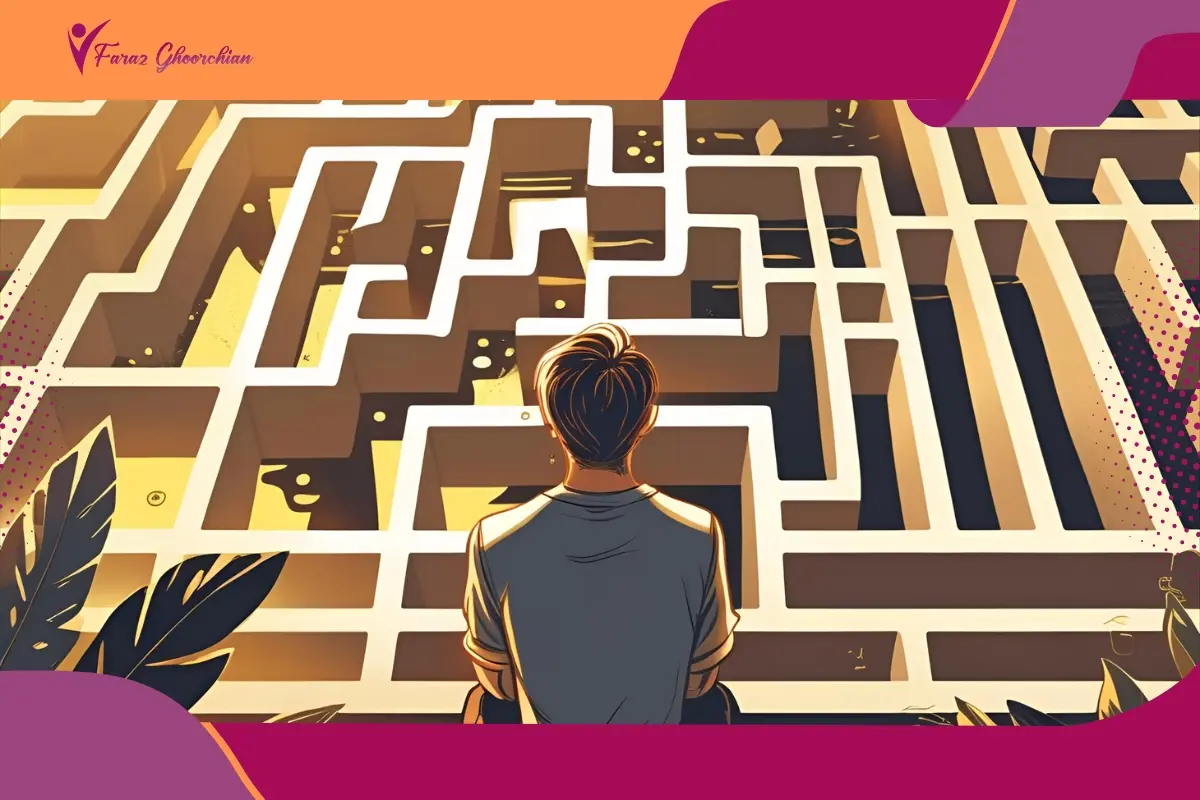Learn what problem-solving skills are, why they matter, and how to develop them with proven techniques, strategies, and real-world examples.
- 1. Introduction: What Is Problem-Solving?
- 2. Problem-Solving Definition and Core Abilities
- 3. Importance of Problem-Solving Skills
- 4. What Are the 7 Problem-Solving Skills?
- 5. Problem-Solving Techniques and Models
- 6. Problem-Solving in the Workplace
- 7. Problem-Solving in Decision Making and Education
- 8. Problem-Solving in Leadership and Project Management
- 9. Practical Problem-Solving Exercises and Strategies
- 10. Long-Term Growth: Building Stronger Problem-Solving Skills
- 11. Conclusion
Introduction: What Is Problem-Solving?
Everyone runs into problems, big or small, almost every day. Figuring out how to deal with them is what we call problem-solving skills. At the simplest level, it is the ability to notice that something is not working and take steps to fix it. That might be as ordinary as deciding how to stretch a tight budget, or as complex as guiding a team through a stalled project. The problem solving definition covers more than logic alone; it brings in creativity, patience, and sometimes a fresh way of looking at things. When people combine critical thinking and problem-solving, they learn to break challenges down, weigh options, and move forward with confidence. In short, knowing what problem-solving is gives anyone a tool that applies everywhere, from classrooms to careers to daily life.
Problem-Solving Definition and Core Abilities
Most people don’t sit around asking, “what is the problem solving definition?” until they’re stuck with a real challenge. Suddenly, it becomes clear that problem-solving skills are less about textbooks and more about how we react when things go wrong. Maybe it’s a project at work that keeps stalling, or a decision at home that feels impossible. In those moments, a person draws on different problem-solving abilities without even naming them: noticing what the actual issue is, thinking through options, and testing a few ideas until something works. A strong problem solving job skill shows up when someone can stay calm under pressure and keep moving forward. People often wonder about problem solving hard or soft skill, and the truth is that it sits right in between, because it requires technical reasoning as much as empathy and judgment.
Importance of Problem-Solving Skills
Think about the last time something didn’t go as planned. Maybe a project at work suddenly hit a snag, or an important decision at home left you stuck. In those moments, the importance of problem-solving skills becomes clear. These are the abilities that help someone take a step back, look at what is really happening, and decide on the best way forward.
Strong problem-solving abilities often separate people who freeze under pressure from those who keep moving. At work, a solid problem solving job skill shows employers that someone can handle the unexpected without losing focus. It might be applying tried-and-true problem-solving strategies, or mixing logic with creativity to test new problem-solving techniques. When critical thinking and problem-solving come together, decisions tend to be smarter and more sustainable.
Outside the office, these skills matter just as much. Problem-solving in the workplace builds trust, but the same habits help in education, leadership, and personal challenges. They nurture resilience, encourage fresh ideas, and make people better prepared for change. Problem-solving, in the end, is not just about fixing problems. It is about building the confidence to face whatever comes next.
What Are the 7 Problem-Solving Skills?
Most people don’t stop to list out skills when a problem shows up. You just deal with it. But when you look back, you can usually see that the same problem-solving skills came into play. These seven stand out most often:
- Analysis: Slowing down to see what’s really going on. A team might blame slow progress on staff, but the real issue could be unclear instructions.
- Research: Checking facts or asking around before acting. Even something small, like comparing prices before buying, is part of it.
- Creativity: Leaning on creative problem-solving, the moment you try an unexpected idea when the usual way isn’t working.
- Decision-making: Closely tied to problem-solving in decision making. It’s that point where you stop weighing and actually choose.
- Communication: Talking through solutions in plain words. Without it, problem-solving in the workplace usually breaks down.
- Collaboration: Problems feel lighter when shared. Leadership often means pulling in others to see angles you missed.
- Resilience: Trying, failing, then trying again. Adjusting problem-solving techniques until something finally clicks.
Put together, these habits make up a working problem-solving model. Not a perfect formula, but a set of tools people lean on every day.
Problem-Solving Techniques and Models
People rarely sit down thinking, “which problem-solving model should I use?” More often, they grab whatever approach feels right in the moment. Still, a few problem-solving techniques show up again and again because they actually work.
- Brainstorming: Tossing around ideas without worrying if they’re good or bad. In creative problem-solving, the oddest idea sometimes sparks the real breakthrough.
- Root Cause Analysis: Asking “why” until you uncover what’s really wrong. A late project might look like poor effort, but in problem-solving in project management it’s often a planning gap.
- Mind Mapping: Drawing ideas out on paper so patterns appear. Students use it to study, managers use it when choices feel messy.
- SWOT Analysis: Listing strengths, weaknesses, opportunities, and threats. It’s common in planning and fits well in problem-solving in leadership.
- PDCA Cycle: Plan, Do, Check, Act. Handy in schools and problem-solving in the workplace, especially when changes keep repeating.
- IDEAL Model: Identify, Define, Explore, Act, Look back. This one ties closely to problem-solving in decision making, because it builds reflection right into the process.
None of these methods is magic, but together they form a toolkit. Picking the right one at the right time is what makes problem-solving strategies useful in real life.
Problem-Solving in the Workplace
Anyone who has spent time in an office knows that problems never arrive with a warning. A system crashes during a client call, a project drifts off schedule, or two departments clash over priorities. In those moments, the value of problem-solving in the workplace becomes obvious. It is less about theory and more about staying calm, spotting the real issue, and moving toward a fix.
Strong problem-solving skills help employees go beyond quick patchwork. A team leader who realizes missed deadlines come from poor handovers, not laziness, is using critical thinking and problem-solving in action. Companies also prize problem solving job skill because it builds trust. People want colleagues who can face setbacks without panic.
Practical problem-solving strategies often start small: running a short brainstorming session, mapping where communication broke down, or testing different problem-solving techniques. Even something as simple as taking time to improve communication skills can prevent the same issue from repeating.
In the end, problem-solving at work isn’t about avoiding trouble. It is about learning to handle it so the team keeps moving forward.
Problem-Solving in Decision Making and Education
Picture a manager trying to choose between two suppliers, or a student sitting in front of a test question that looks impossible. Both situations rely on problem-solving in decision making. It is not about guessing. It is about slowing down, checking the facts, and deciding which option makes the most sense. That mix of analysis, emotional intelligence, and instinct is where real problem-solving skills show up.
In schools, the role of problem-solving in education is just as clear. Students who learn a few simple problem-solving techniques often feel less anxious because they have a way to tackle big tasks step by step. A teacher encouraging different problem-solving abilities might show that wrong answers are just part of learning, not failure.
Whether in classrooms or offices, problem-solving makes decisions steadier and people more resilient. It is less about perfection and more about having the tools to face the next challenge.
Problem-Solving in Leadership and Project Management
A project slips off track. Messages get crossed, half the team thinks the deadline moved, and the other half is waiting on instructions that never came. This is where problem-solving in leadership shows up. A good leader notices the mess, pulls people together, and clears the fog. It is not about having every answer but about creating space where the team can figure things out.
With problem-solving in project management, the same pattern plays out. A delay isn’t always laziness; sometimes it’s because the goals were fuzzy or the resources were missing from the start. Managers who lean on practical problem-solving techniques, like a quick root cause check or an informal brainstorm, can turn the energy back in the right direction. Using steady problem-solving strategies builds trust. Even when bigger pressures hit, like sudden client demands or the shadow of Job Loss and Unemployment Stress, strong leadership can turn the tension into momentum. Problems don’t vanish, but they stop feeling like walls.
Practical Problem-Solving Exercises and Strategies
The only way to get better at solving problems is to actually practice. Reading helps, but real progress comes when people try things out and make mistakes along the way. Different problem-solving exercises give both students and professionals a safe way to test their thinking.
- Case studies: Instead of theory, people look at real stories. For example, how a business dealt with a sudden supply shortage. These examples show how problem-solving abilities work in messy situations.
- Role-play: A team might act out a tough client call or a conflict between coworkers. Practicing problem-solving in the workplace here makes the real thing less stressful.
- Brainstorming: Quick bursts of ideas can spark creative problem-solving, especially when everyone feels free to throw in odd suggestions.
- Root cause questions: Keep asking “why” until the real issue shows up. This simple tool often builds the strongest problem-solving techniques.
- Group challenges: From classroom puzzles to workplace simulations, these activities highlight teamwork and sharpen problem-solving strategies.
These aren’t about neat solutions. They train people to think on their feet, adapt, and keep going, even when stress or Burnout Symptoms and Coping Tips become part of the picture.
Long-Term Growth: Building Stronger Problem-Solving Skills
Real problem-solving skills come slowly. They show up in small, awkward moments like an unfinished project, a decision made too quickly, or the third time someone has to redo a task because the first fix did not hold. That is where problem-solving abilities quietly build.
Growth is not dramatic. Sometimes it is just using simple problem-solving strategies to get through the day. Other times it is testing new problem-solving techniques with a team, or falling back on familiar problem-solving models when choices feel too tangled. The mix of creativity, patience, and critical thinking and problem-solving makes the difference, even if it does not look impressive at the time.
How a person feels matters as well. A stressed mind struggles to see options, while a calmer one can spot solutions faster. Even during hard patches, like looking for ways on how to be happy when depressed, the act of working through problems slowly creates resilience. Little by little, it sticks.
Conclusion
In the end, problem-solving skills show up in everyday life more than anywhere else. A team stuck on a project, a student frustrated over homework, or a leader calming people when things feel uncertain, it is the same set of habits at work. That mix of critical thinking and problem-solving with patience and a bit of creativity is what turns problems into progress.
There are plenty of tools to lean on, from simple problem-solving techniques to more structured problem-solving strategies and even full problem-solving models. But tools are just tools. What matters is the practice, trying, failing, adjusting, and trying again. Over time, those steady problem-solving abilities build confidence and resilience. They do not erase challenges, but they make people ready to face them. And maybe that is the quiet strength of problem-solving, it keeps you moving forward when nothing else does.















